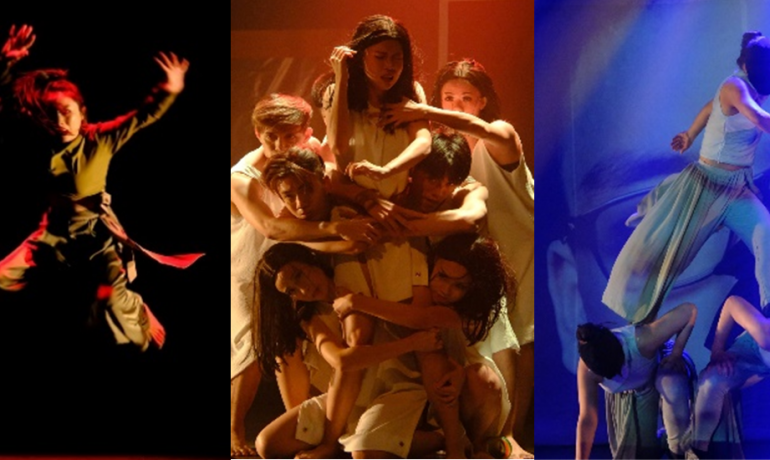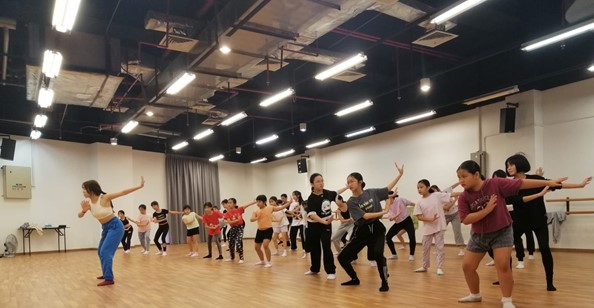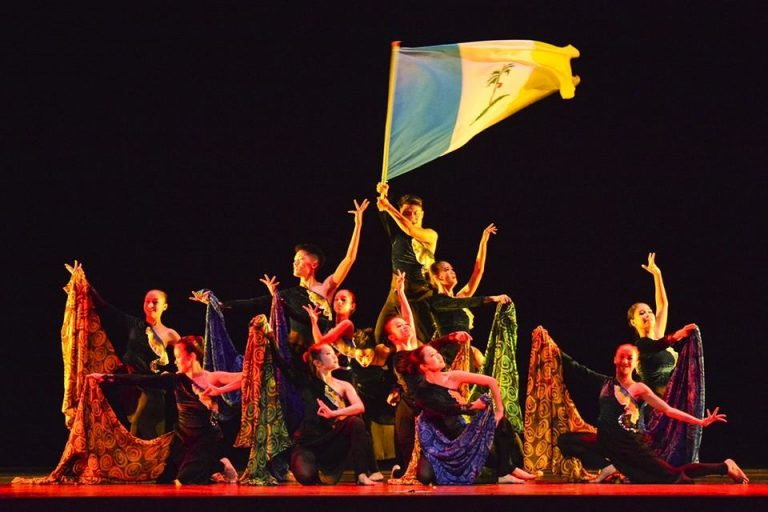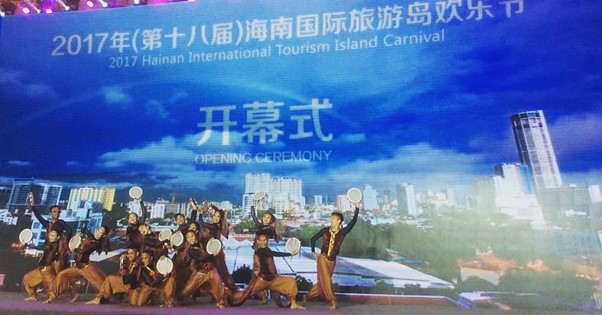Now in their ninth year, Euphoria Penang Modern Dance Ensemble is still going strong. Artistic Director Aida Redza gives us a rundown on the group and discusses the challenges faced by local dancers.
By Yee Heng Yeh
If you’ve attended any public event in Penang that was headlined by a dance production, chances are you’ve seen Euphoria Penang Modern Dance Ensemble in action. Known for their electrifying performances and crowd-pleasing choreographies that draw upon multiple dance traditions, Euphoria performs at launches, festival celebrations, and open houses throughout the year. In last year’s George Town Festival (GTF), they staged a full-length production, “VISION – a New Wave”, which featured dance creations by emerging choreographers that explored the gift of sight.
For this International Dance Day, we spoke to Aida Redza—renowned dancer, choreographer, and teacher who is a pillar of the local dance community. She also happens to be the Artistic Director of Euphoria, a position she has held since 2014.
Official launch of Euphoria Penang on 23 April 2015, at St. Jo’s, Gurney Paragon. Photo courtesy of Euphoria Penang Modern Dance Ensemble.
Euphoria first began as a 6-month project from May to December 2014, before having its official launch in April 2015. What was the impetus for that initial project, and how did it turn into the organisation it is today?
The 6-month project was meant to be a trial period for a method of training involving an ensemble of local young dancers from all races, with the outcome of two new dance creations that promoted the diverse cultures of Penang. This prompted a proposal to seek support and funding from the Penang Chief Minister to officially set up Euphoria. The project was initiated by Ms Khor Tze Ming of Hunza Group, as a Corporate Social Responsibility (CSR) move on their side to contribute to the development of dance in Penang. The ensemble’s committee includes members from the Chief Minister’s office, the Hunza office, myself as President, and Tan Hock Kheng as Treasurer. For the past nine years, the ensemble has grown in number, then scaled down during COVID, but has picked up again slowly after. In 2016–2018, we had almost 30 dancers—now we have 20. Only three or four of them are from when we first started.
With so many performances at festivals and launches lined up throughout the year, how long does it take to stage each production, from conceptualisation to rehearsing to performance?
For GTF productions, since we receive confirmation only about three months before the production date and our dancers can only commit to three to four rehearsals a week, they have only about six weeks of three-hour rehearsals to prepare. For our new choreographies, since the choreographers are invited collaborators, we can only afford to have them work intensively for one-and-a-half months to prepare for a new choreography, due to budget considerations.
Contemporary Dance Introduction led by Euphoria’s dancer teacher Flora Foong. Photo courtesy of Euphoria Penang Modern Dance Ensemble.
Euphoria often collaborates with local dancers and choreographers for workshops and performances. How does this process of collaboration usually work?
For the workshops, we invite the artist, or they might approach us and offer their workshops. So we organise them for our dancers and make them open to the public. Often the workshops are led by traditional dance teachers, who teach us the basics of traditional or classical forms e.g. Bharatanatyam, Zapin, Odissi, Chinese Fan Dance, Silat, and Bhangra. In the early years, some of our senior dancers (who have left for further studies) would hold workshops when they are back for the holidays. Local workshop leaders include Liu Yong Sean, Ong Tze Shen, and Paula Pau, while guest leaders have come from the USA, Spain, Australia, Korea, Kuala Lumpur, Jakarta, and Thailand.
For performances, it is usually with local Penang talents. We engage them as a choreographer and support them with guidance as they come out with ideas. We give them full freedom to try out their idea with our dancers based on a theme that we brainstorm together. I will follow the development of their choreography and engage the necessary artists for them to work with, such as composers, costume designers, prop makers, or visual designers.
What are the most challenging and most rewarding aspects of your role as the Artistic Director?
To bridge the races and represent all races in the ensemble, not only in the choreography. When heading an ensemble who are all mostly Chinese, it’s a challenge to follow their discussion—although we speak and instruct in English, when the dancers are communicating among themselves, I would have to wait for the translation. But we’ve managed for almost nine years now, communicating well with each other, so no complaints from me.
Also, since the dancers are part-timers, coordinating everyone’s availability for rehearsals other than the fixed training days has always been a big challenge. This affects the consistency of the training and development of dancers, especially when some have to miss a month or two of training if they have exams, or work/performances elsewhere… When they return, I have to ensure that they catch up in their technique and stamina.
However, it’s most rewarding when my dancers continue to pursue their career or studies in dance or performing arts. I see them doing well, either locally or abroad, and I know that we are not that bad after all. Considering that we don’t do this full-time, nor are we an institution where we would be fully supported. We worked hard to get to where we are now, recognised as an ensemble by the State government—that is unprecedented in the history of dance in Penang.
Read more from one of Aida’s dancers: https://penangartdistrict.com/dance-artist-yee-sue-ki-comes-full-circle-in-the-community/
Euphoria “aims to promote and develop new creation dance that revitalizes Penang’s multicultural dance traditions”. What is the role that dance plays in the wider public?
Penang’s population is diverse, but most communities remain within their own groups. Dance, in a way, can bridge the differences—if this is hard in practise, we can still reach out to audiences by promoting harmony, peace, and tolerance through a cross-cultural and intercultural process of exchange in our training, creating, and performance.
Euphoria performing “Together, We Rise” at the Mid-Autumn Festival – Pesta Tanglung Nibong Tebal in 2015. Photo courtesy of Euphoria Penang Modern Dance Ensemble.
Part of Euphoria’s mission is also to “[nurture] young dancers so that they are able to attain professional standards to perform locally and internationally”. How does Euphoria source and train new talents?
We invite emerging Penang artists to choreograph, teach, and perform with us for state events and functions. Before COVID, we travelled to China (Hainan and Guangzhou) to present our creations at an International Tourism event. Hopefully, now that COVID is under control, we will have the opportunity to travel again. One setback is that, as we are a modern dance ensemble, we’re not prioritised for opportunities to represent Penang, compared to the more cultural dance groups.
Nevertheless, our young dancers gain experience and training from guest and resident artists. We also encourage our dancers to join competitions, World Dance Day celebrations, and festivals. They have the freedom to dance with other groups—not all companies allow that. Although participating in competitions and festivals costs money, we provide guidance on their proposals to seek funding from our committee or other sources. It’s not easy: our dancers had to pay for their own flights and lodgings when they went to Korea for a competition with Liu Yong Sean, with some support from YB Chong Eng for their expenses. We hope one day Euphoria’s committee and the state will see the value of our participation and support us in attending festivals and competitions abroad.
What advice would you give aspiring or emerging dancers/choreographers?
Based on experience, I’ve found that a few aspiring or emerging dancers and choreographers feel like they can’t approach us when they come back to Penang. I don’t know why—probably due to the kind of dance we produce, and the kind of events where we perform. Euphoria was formed mainly to promote the diverse cultures of Penang in a unique, modern way, which we do at corporate and state events. So not everyone appreciates the direction we are taking. Although we’re seen as a commercial dance company, Euphoria’s practise is inclusive and all-rounded as our dancers are trained in all cultural forms and create different types of dances. Thus, working with Euphoria is a good starting point for emerging artists to build a network, strengthen the dance community, plus nurture a new Malaysian dance identity. Come and connect with us!
Euphoria at the Hainan International Tourism Island Carnival opening ceremony in 2017. Photo courtesy of Ketty Ooi.
What do you think is the future of the dance scene in Penang?
The Penang Office of Tourism and Arts, Penang State Government, Penang Arts Council, and the Federal JKKN and Malaysia Tourism and Arts need to provide more incentives, platforms, and opportunities for the practise and development of dance in Penang so that our talents will stay and contribute to the local scene, instead of leaving to pursue their career and art abroad. We need to have institutions where dance is offered as a diploma or certification, supporting dance as a means to not only promote the arts, but also bring in more tourists to Penang.
What we do have is the passion, dedication, and semangat of our Penang dance artists, alongside NGO performing arts groups, who are pushing forward to keep dance alive. Euphoria is one part-time dance ensemble that is supported by the Penang State and Hunza Group (for which we are very appreciative), yet we cannot build a full-time career as dance artists. This is the challenge. The future lies in us working together across different cultural backgrounds and dance/art forms, to co-create a more powerful community of artists, so that we are seen and heard by the government, the NGOs, and the corporations regarding the importance of dance in nurturing the nation’s health and wealth.
Finally, what projects from Euphoria can we look forward to this year?
April: Penang Dance Day celebrates World Dance Day.
May: A collaborative work with Majlis Kebudayaan Negeri (MKN).
November: Hunza’s 45th Anniversary.
Cover photo: VISION – a New Wave, presented by Euphoria at George Town Festival 2022. Photo courtesy of Euphoria Penang Modern Dance Ensemble.
Yee Heng Yeh is a writer and translator. His work is featured on The KITA! Podcast, adda, Strange Horizons, Nutmag, Nashville Review, Guernica, and Apparition Lit. He is on Twitter as @HengYeh42.





